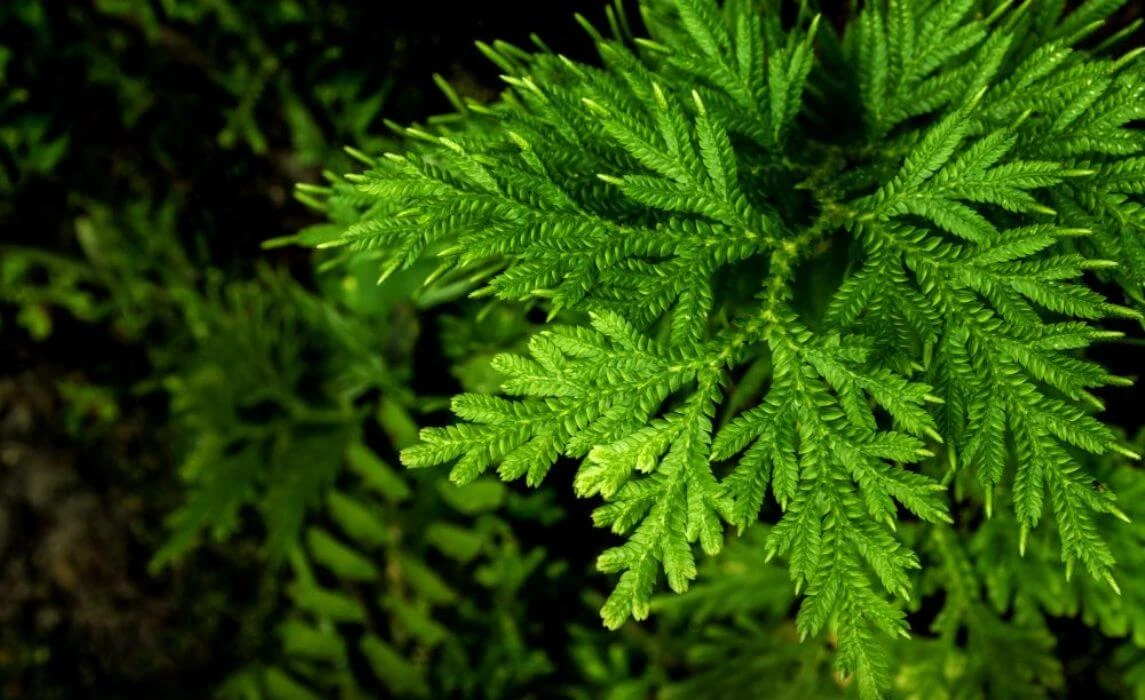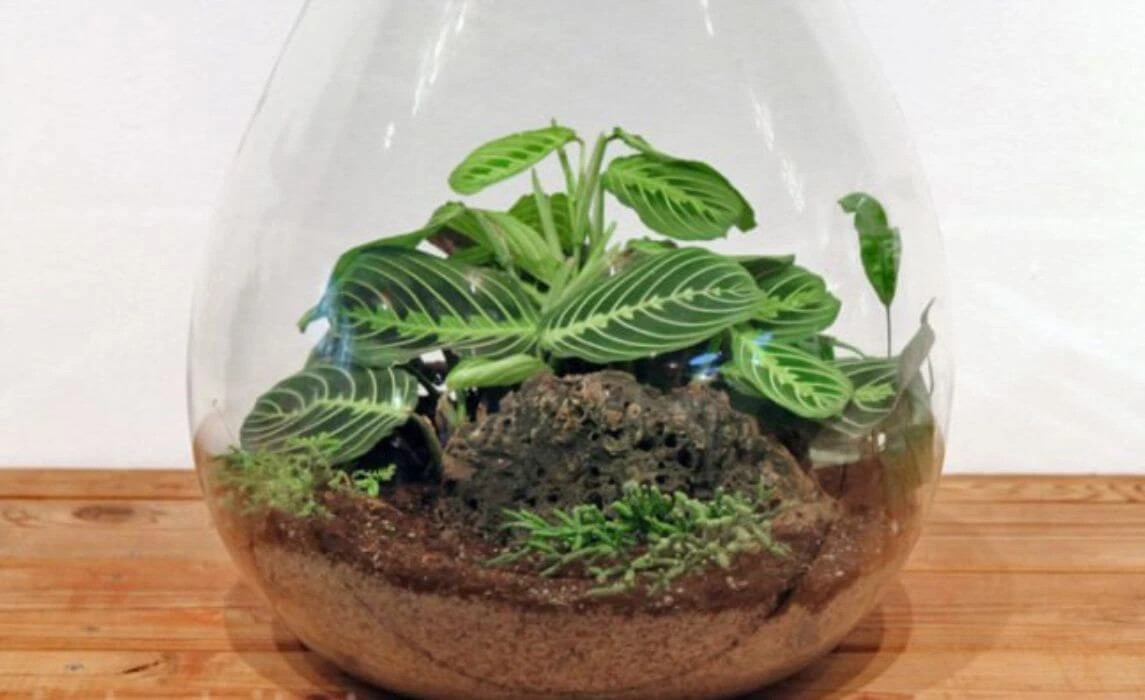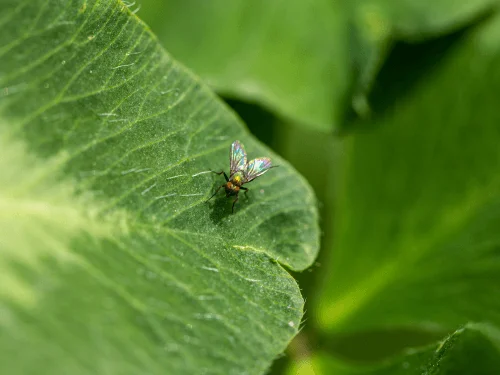Best Terrarium Plants: Top Picks for Your Open or Closed Terrarium Setup

Q1: How can I identify common insects in my garden?
A: Look for signs such as holes in leaves, leaf miner damage, egg clusters, or wilting. Inspect the undersides of leaves, stems, and roots for adults and larvae of moths, sawfly, cabbage looper, tomato hornworm, and European corn borer.
Q2: What natural methods can control pests?
A: Encourage beneficial insects like ladybugs and parasitic wasps, handpick pests, squish caterpillars and slugs, prune infested leaves, and use DIY sprays like neem oil or spinosad. Row covers can also repel moths, sawfly, and cabbage white.
Q3: How can I prevent pests in my garden?
A: Maintain garden hygiene, remove debris, rotate crops, use companion planting, encourage beneficial insects, and inspect leaves and roots for early damage. Row covers and DIY sprays also help prevent infestations.
Q4: How do pests cause plant diseases?
A: Pests spread blight and bacterial wilt through feeding wounds. Early identification, removing infested plants, natural pest control, and healthy soil help minimize disease.
1. Can I grow fruit trees in small gardens or pots?
Yes! Many dwarf fruit trees and container-friendly varieties are perfect for small gardens or patios. Trees in pots can include citrus trees, figs, and dwarf apple trees. Using containers allows you to control soil, water, and temperature more easily, making it possible to grow fruit even in northern climates. These trees are especially useful if you want fast-growing trees that produce fruit within a few years and don’t require a large orchard space.
2. What climate is best for fruit trees?
The climate plays a major role in fruit production. Cold-hardy trees like apples, pears, and plums survive in northern regions, including zone 3, while citrus trees, figs, and peaches thrive in warmer southern areas like Florida or Virginia. Some fruit trees may require protection from frost, while others can tolerate cold winters. Understanding your USDA zone and local conditions ensures your trees will grow healthy and produce fresh fruit consistently.
3. Where can I buy fruit trees online?
Many growers offer fruit trees for sale online, including bare root trees, grafted trees, and container-grown trees. Buying fruit trees online allows you to select from a wide range of fruit tree varieties suitable for your climate, including apples, pears, peaches, plums, citrus trees, and more. When purchasing, check for USDA zone compatibility, tree size, and health guarantees to ensure you receive a quality tree that will thrive in your garden.
1. What is the best way to grow raspberries?
Raspberries grow best when planted in a sunny garden with well-draining soil. You can start by planting bare-root or potted plants in early spring or late fall. Rows of raspberries should be spaced about 2 to 3 feet apart within a row and 8 feet between rows. Using a trellis or support system helps canes grow upright and promotes healthy berry production.
2. How do I plant raspberries?
When planting raspberries, place the crown of the plant 1 or 2 inches above the ground. For bare-root plants, spread the roots in a hole and cover gently with soil. For potted plants, plant at the same depth as they were in the container. Make sure each bush has space to spread so new shoots and suckers can grow without overcrowding. Raspberries are easy to grow, but giving them proper spacing and sunlight ensures your raspberry patch thrives.
3. When do raspberries grow fruit?
Raspberries are perennials, and the first year canes mostly focus on root and cane growth. Summer raspberries (summer-bearing) produce fruit on two-year-old canes, typically in early summer. Fall-bearing raspberries (everbearing) can produce a crop in the fall of the first year, and another in the following summer from the same primocanes. With proper care, a bush can produce fruit in both summer and fall, giving you fresh raspberries for pies, tarts, or eating straight from the garden.

If you’ve ever thought about creating your own little green world inside a glass container, you're not alone! Terrariums are having a moment—and for good reason. They're like mini ecosystems that bring a burst of nature into your home, and they’re surprisingly easy to care for. In this post, we’re diving into some of the best terrarium plants to make your indoor garden thrive.
14 Best Terrarium Plants
1. Spike Moss

Spike moss is one of those plants that will immediately make you think of a mini rainforest. Its vibrant green, fern texture gives it a lush, almost magical vibe that’s perfect for closed terrariums. I love how its compact size means it can thrive in the tiniest of spaces, like a little glass globe or a small glass jar. It loves high humidity, which makes it ideal for a low maintenance, self-sustaining environment. Honestly, if you’re a fan of easy-care plants but still want that “wow” factor, spike moss is your friend. It’s a forgiving little plant that doesn’t demand much attention, making it great for both beginner and seasoned gardeners.
- Soil: Moist, nutrient-rich soil with excellent drainage.
- Water: Mist 3–4 times a week to maintain moisture.
- Light: 6–8 hours of indirect light daily.
- Temperature: 60–75°F.
- Humidity: 70–90%.
2. Baby Tears

If you want a plant that adds a lush, soft touch to your terrarium, baby tears should be on your list. This little creeping plant forms a dense mat of tiny, rounded green leaves that look like the softest carpet you could walk on—if only it was big enough! Baby tears, a miniature plant. thrive in humid environments, so they’re a perfect choice for closed terrariums. It's one of those plants that’s truly satisfying to watch grow, and I promise you’ll love how vibrant and full it looks in your setup.
- Soil: Loamy soil with good drainage.
- Water: Water 2–3 times a week to keep the soil evenly moist.
- Light: 6 hours of filtered light daily.
- Temperature: 65–75°F.
- Humidity: 60–80%.
3. Creeping Fig

Creeping fig is one of the easiest and most rewarding plants to grow in open terrariums. This vine is perfect for creating a cascading effect—its heart-shaped leaves grow rapidly and can easily spill over the edges of a container. It's great if you love plants that bring a touch of nature into your home. It's low-maintenance, but the more light and space it gets, the better it grows. If you want a plant that can handle being tucked into corners or hanging down over the sides of your terrarium, creeping fig will not disappoint.
- Soil: Well-draining soil with organic matter.
- Water: Water 1–2 times weekly, keeping the soil lightly moist.
- Light: 6–8 hours of bright, indirect sunlight.
- Temperature: 60–85°F.
- Humidity: 50–70%.
4. African Violet

African violets are the divas of the terrarium world—beautiful, vibrant, and just a bit fussy. They bring a lovely pop of color to your terrarium with their velvety leaves and small, delicate blooms that come in shades of purple, pink, and white. Although they can be a little more delicate than some other plants, their beauty is totally worth it. If you’re someone who likes having flowering plants indoors, this tropical plant is a great choice because they’ll bloom almost year-round if you treat them right
- Soil: Well-draining, slightly acidic soil (pH 6.0–6.5).
- Water: Water 2 times weekly, avoiding wetting the leaves.
- Light: 8–12 hours of indirect light daily.
- Temperature: 65–75°F.
- Humidity: 50–60%.
5. Fittonia (Nerve Plant)

Fittonia is a stunning choice for any terrarium, with its striking veined leaves in shades of green, pink, or white. It's like nature’s version of a decorative rug—bold, vibrant, and full of life. The contrasting veins in the leaves really pop, and it’s surprisingly easy to care for. It does best in a humid, closed setup, which makes it perfect for beginners who want to experiment with dynamic, colorful foliage in small spaces.
- Soil: Peat-based potting mix.
- Water: Water 3 times a week to maintain consistently moist soil.
- Light: 6–8 hours of low to medium indirect light.
- Temperature: 60–80°F.
- Humidity: 60–90%.
6. Polka Dot Plant

This plant lives up to its name with speckled leaves in shades of pink, red, or white. It adds such a playful and cheerful element to your terrarium, making it perfect for anyone who enjoys bold and unique foliage. Polka dot plants are super easy to grow in both open and closed terrariums. The best part? It’s fairly low-maintenance and will grow just as happily in a small glass container as it would in a larger one.
- Soil: Rich, well-draining soil.
- Water: Water 2–3 times weekly, keeping the soil lightly moist.
- Light: 8 hours of filtered light daily.
- Temperature: 65–75°F.
- Humidity: 50–70%.
7. Air Plants (Tillandsia)

Air plants are nature’s little marvels, growing without soil and needing minimal care. Their sculptural, almost alien-like appearance makes them a fun choice for creative gardeners. Perfect for open terrariums, they can be perched on driftwood, shells, or decorative rocks for an artistic display.
- Soil: None needed—attach to surfaces or use decorative materials.
- Water: Mist 2–3 times a week or soak in water for 20 minutes weekly.
- Light: 8–12 hours of bright, indirect light.
- Temperature: 65–85°F.
- Humidity: 50–70%.
8. Moss

Moss is one of the easiest plants to incorporate into your terrarium, and it’s a must-have for anyone who loves that natural, woodland aesthetic. It creates such a soft, plush ground cover, and I personally love how it brings everything together in closed terrariums. It thrives in the moist, humid environment which makes it an excellent choice for closed terrariums, and it really helps create that little ecosystem vibe. It’s a low-maintenance plant that’ll stay green and vibrant with minimal effort.
- Soil: Moist, acidic soil with organic content.
- Water: Mist 3–4 times weekly to maintain humidity.
- Light: 6 hours of indirect light daily.
- Temperature: 55–75°F.
- Humidity: 70–90%.
9. Prayer Plant (Maranta)

The prayer plant is one of those plants that constantly surprises you. I’ve had one in my terrarium for a while, and I just adore how its dark green leaves fold up at night like it’s "praying"—it’s a cool natural phenomenon. The intricate leaf patterns are what really make this plant stand out. It’s perfect for closed terrariums because it loves the humidity and the high moisture. If you’re someone who loves dynamic plants that change with the light, the prayer plant will keep you entertained.
- Soil: Well-draining, slightly acidic soil.
- Water: Water 2–3 times weekly, keeping the soil evenly moist.
- Light: 6–8 hours of indirect light.
- Temperature: 65–75°F.
- Humidity: 60–80%.
10. Pilea (Friendship Plant)

Pilea, or the "Chinese Money Plant," is one of those plants that makes you feel like you’re on top of your indoor gardening game, even if you’re a beginner. With its vibrant, round, coin-shaped leaves, it brings a playful, modern touch to any room. This houseplant is great if you have a corner of your home that doesn’t get a ton of natural light as they can live happily in low light conditions, though they will appreciate bright, indirect light if you can give it to them. Pilea also tends to ‘pup,’ sending off little baby plants that you can propagate and share with friends (or just enjoy for yourself!).
- Soil: Well-draining, light potting mix.
- Water: Water 2 times weekly, allowing the topsoil to dry slightly.
- Light: 6 hours of indirect, bright light.
- Temperature: 65–75°F.
- Humidity: 50–70%.
11. Peperomia

Peperomia is one of those plants that comes in a variety of shapes, sizes, and colors. From the thick, fleshy leaves of Peperomia obtusifolia to the stunning variegated patterns on Peperomia caperata, it’s a plant that can easily adapt to different aesthetics. This plant is perfect for people who might forget to water their plants for a while (no judgment here!). Plus, they’re great in small spaces like terrariums because they stay relatively compact.
- Soil: Well-draining, loose potting mix.
- Water: Water 1–2 times weekly when the top inch of soil feels dry.
- Light: 8 hours under bright and indirect sunlight
- Temperature: 65–75°F.
- Humidity: 50–70%.
12. Begonia

Ah, begonias. These plants just never fail to impress.Their intricate, waxy leaves, paired with the colorful flowers (usually in shades of pink, red, or white), make them a must-have for any plant enthusiast. Begonias thrive in high humidity and moderate temperatures, making them perfect for closed terrariums. Plus, the wide variety of begonias means you can find one to suit any aesthetic—whether you love the fancy, ruffled leaves of Begonia rex or the compact, easy-care Begonia semperflorens. The care is pretty simple, but I’ve noticed that keeping their leaves dry and giving them the right amount of light is key to keeping them happy.
- Soil: Rich, well-draining soil.
- Water: Water 2–3 times weekly, keeping the soil moist but not soggy.
- Light: 6 hours of filtered sunlight daily.
- Temperature: 65–75°F.
- Humidity: 60–80%.
13. Pothos

Pothos is like the easy-going, laid-back friend of the plant world. I’m sure you've seen it in homes and offices because it’s so easy to grow and care for. If you're looking for something that will thrive even if you forget to water it for a few days, pothos is your plant. It’s one of the best plants for beginners because it tolerates a wide range of light conditions and is super forgiving when it comes to watering. Plus, its trailing vines can grow quite long and can be trained to cascade down or climb up a trellis—so if you love the look of a trailing plant in your terrarium, pothos is an ideal choice.
- Soil: Well-draining soil
- Water: Water 1–2 times weekly, allowing the soil to dry slightly between waterings.
- Light: 6–8 hours of indirect sunlight.
- Temperature: 65–85°F.
- Humidity: 50–70%.
14. Boston Fern

The Boston Fern is a classic choice for terrariums, loved for its lush, feathery fronds that bring a soft, elegant vibe to any space. The way its fronds drape and move gently with the slightest breeze gives it a dreamy, almost whimsical feel. The leaves are bright green, and they tend to get even more vibrant with the right humidity and light. What’s cool is that it does really well in a low-maintenance environment, making it ideal if you’re looking for something that doesn't require constant attention.
Quick Care Tips:
- Soil: Well-draining, moist, acidic soil is a must.
- Water: Water 1-2 times per week, depending on humidity levels; ensure the soil is kept moist but not soggy.
- Light: 6-8 hours of indirect light per day. Keep it out of direct sunlight, as it can burn the fronds.
- Temperature: Best kept between 65-75°F.
- Humidity: 60-80%, which is why it's the best plant for closed terrariums with high humidity.
FAQs
Q: Can succulents thrive in terrariums?
A: Succulents can thrive in open terrariums but are generally not ideal for closed terrariums. Open terrariums provide the airflow and drier environment that succulents need to prevent root rot and overhydration. Closed terrariums, with their high humidity and limited ventilation, create conditions that are too moist for most succulents to survive.
Q: Can I use cuttings to start a terrarium?
Absolutely! Using cuttings to start a terrarium is one of the best ways to grow plants in a small, contained environment. Many plants, like Pothos and Peperomia, are great for this because they root easily. You can simply snip off a healthy stem, place it in water for a while, and then add it to your terrarium once it's rooted. It’s a fun, cost-effective way to propagate your favorite houseplants, and it helps your terrarium flourish without having to buy a new plant every time!
Q: Can I grow cactus in a terrarium?
Cacti can be a bit tricky when it comes to terrariums because they prefer dry, well-ventilated spaces, which can be tough to achieve in a closed container. While they thrive in open terrariums with lots of light and airflow, you’ll want to be mindful of humidity. Too much moisture in the air can cause them to rot. If you love the look of miniature cacti, just be sure to pick a terrarium with plenty of ventilation and avoid over-watering.



.webp)



